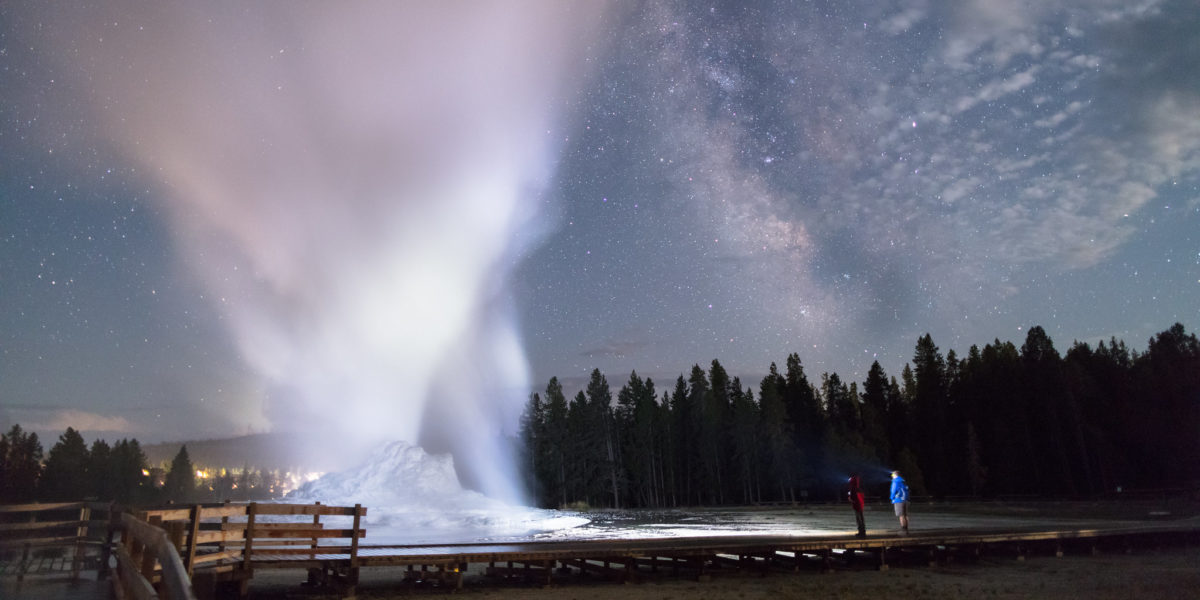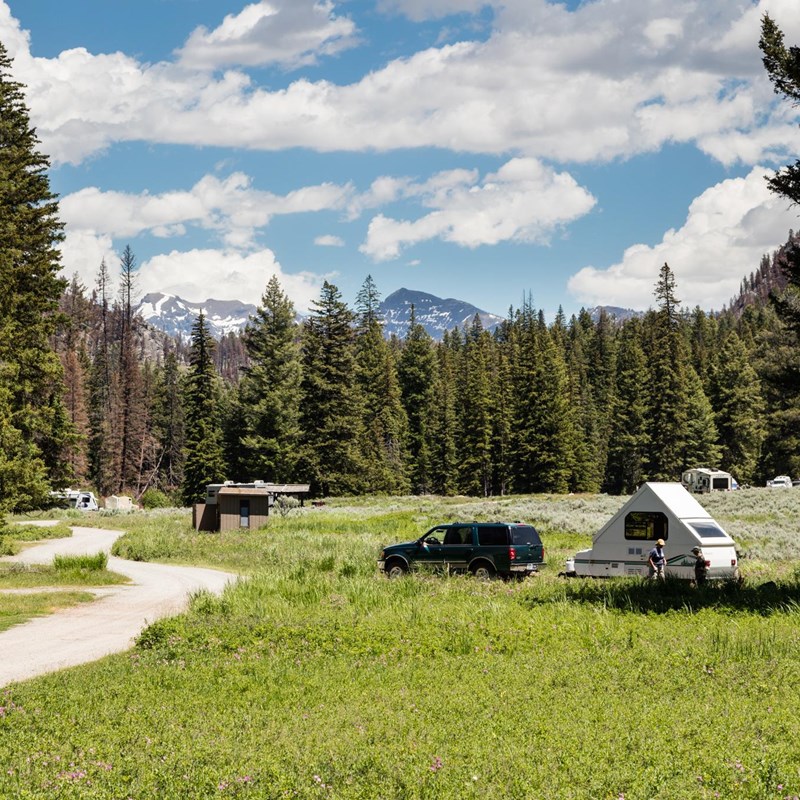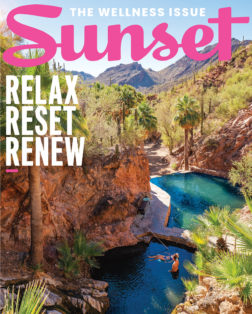
Score a Yellowstone Campsite Early: Our Guide to Top Spots
Here’s how to reserve a Yellowstone National Park campsite early—and where to book.

It’s about to get a lot easier to book the Yellowstone National Park camping trip you’ve been pining after. Beginning Feb. 14, visitors to America’s first national park will be able to reserve a number of campgrounds as far out as six months in advance, Park Service officials announced—a move that comes following public requests to consider booking systems similar to those already in use by a number of other parks.
Available to book on Recreation.gov, popular campgrounds like Indian Creek, Lewis Lake, Pebble Creek, Slough Creek, and Mammoth will have 80% of individual campsites open for advanced reservations. The remaining 20% of available spots can be booked within two weeks of arrival, a move designed to allow for the flexibility of last-minute travelers.
“The ability to make reservations will enable visitors to plan their trips ahead of time and provide assurance that they will have a campsite upon arrival,” NPS officials wrote in a release this week. “It will enrich the visitor experience by reducing traffic congestion at campgrounds, improving safety and eliminating uncertainty and frustration….Campgrounds are expected to fill quickly once sites are made available.”
Perhaps you’d like to schedule a Yellowstone trip but are unsure of which of the aforementioned spots to choose. The following rundown of what each of them offers should help:

Jacob W. Frank/NPS
- Lewis Lake: A more off-the-beaten-path camp experience, Lewis Lake’s 85 sites, which sit at 7,800 feet of elevation, are a short walk from from Yellowstone’s southeast shore of—you guessed it—Lewis Lake. This is not the place to go if you’re after cell and internet service. But for detachment and serenity, it’s difficult to beat. Those with canoes, kayaks, and motor boats are allowed to use them on the lake. Vaulted toilets and potable water are available.
- Mammoth: The only Yellowstone campground open year-round, Mammoth features 85 sites adjacent to its namesake hot springs and array of smoldering terraces. The park’s north entrance in amenity-rich Gardiner, Montana, is just a short drive, so the area will inevitably be more populated. Proximity to nature, hiking, wildlife viewing, and historic sites like Fort Yellowstone—and flush toilets—make Mammoth a worthy stay nonetheless.
- Indian Creek: If Mammoth’s crowds aren’t your thing, venture a mere 8 miles south toward the more primitive solitude afforded by Indian Creek. Near the base of the Gallatin Mountains, 70 sites—best for tent campers—sit well off the main road in a forest teeming with hiking trails. Fishing enthusiasts will love the immediate proximity of the accessible Gardiner River. Toilets? Vaulted. Potable water? Yes.
- Slough Creek: Sixteen sites comprise this campground at the end of a 2-mile dirt road in Lamar Valley. Alongside its namesake creek are grounds that offer unprecedented wildlife viewing, hiking, and stargazing. Spaces at Slough Creek traditionally fill up fast, but this new reservation policy offers a stellar chance to snag a site where you might even hear the distant howl of Yellowstone’s renowned wolves from the coziness of your tent. The nearest amenities can be found 8 miles away at Tower Junction. Onsite vaulted toilets and potable water are available.
- Pebble Creek: In the Lamar Valley, located in the park’s northeastern corner, sits one of the park’s most isolated campgrounds. Bolstered by the stunning backdrop of the Absaroka Mountains, Pebble Creek‘s 27 sites offer a gateway to wildlife viewing and hiking. Fishing opportunities are also available at the nearby Soda Butte Creek. Luxuries in the immediate vicinity are scarce, but gas stations and other amenities can be found about 10 miles away in Cooke City. Vaulted toilets are on site.
In addition to evolving camping arrangements, a number of national parks have moved to reservation systems for general entry to compensate for historic overcrowding. Arches National Park, for example, became the latest destination to incorporate such a policy, with officials in a December announcement citing “congestion and crowding that can negatively impact public safety, visitor experiences, and park resources” as reasons. The system at Arches mirrors those already in use by Glacier, Zion, Yosemite, Rocky Mountain, Acadia, and Haleakalā national parks.
Yellowstone, which in March will commemorate 150 years since it was named a national park, had its busiest year on record in 2021, when a total of 4.86 million visitors flocked to its gates. Last July marked the first time the park welcomed more than a million visitors in a single month.
I personally visited during that record-setting month (mistakes were made) and witnessed flagrant issues stemming from overcrowding. Excess crowds on geothermal boardwalks were log-jammed by generations of families who paused every few seconds for selfies or to regroup after select members fell behind. In one particular incident, a father escorted his young son off the designated boardwalks to explore grounds NPS officials warn are “fragile and thin … [with] scalding water just below the surface. Everyone must always remain on boardwalks and trails and exercise extreme caution around thermal features.”

Sunset’s Wellness Issue 2022
More from this issue:
- How Seth Rogen Turned Meditative Practices into Houseplant’s Homewares
- Booze-Free Bars and Shops Are Finally Gaining Momentum in the West
- Warmer Weather Is Around the Corner: Your February and March Garden Checklist
- These Wellness Getaways Offer Next-Level Spots to Soak
- New Nostalgia Is on the Menu at Seattle’s Hottest Filipino Restaurant
Do your best to avoid the aforementioned violations when visiting Yellowstone. If camping is on the agenda, visit Recreation.gov for details on the reservation roll-out. Just in case, check out the below rules and regulations from Park Service officials, which should be obvious, but, you know…
- Never approach wildlife. “The animals in Yellowstone are wild and unpredictable,” the NPS site reads. “The safest (and often best) view of wildlife is from inside a car. Always stay at least 100 yards away from bears and wolves, and at least 25 yards away from all other animals, including bison and elk.” That means no selfies with bison. No one has getting gored on their 2022 to-do list. Let’s keep it that way.
- Never feed wildlife. If you’re following the rule above, you’re well on your way to success here, too. Still, the spike in visitor numbers has given rise to another issue: littering. Take out what you pack in and leave no trace. It benefits everyone. “Animals that become dependent on human food may become aggressive toward people and have to be killed. Keep all food, garbage, or other smelly items packed away when not in use.”
- Don’t hunt wildlife. Electronic equipment tracking wildlife is also prohibited. The parks are not here for your Instagram hunting clout.
- Stay on boardwalks and trails in thermal areas. Seems self-explanatory, and yet…
- Don’t swim in the hot springs. Not dissolving is ideal.
- Don’t throw anything in the thermal pools. They are not wishing wells for your love life.
- Don’t travel off-road by vehicle or bicycle. Park roads are there for a reason. Venturing off the beaten path inside a national park can do significant damage to plant life and ecosystems.
- Don’t remove natural or cultural resources like wildflowers, antlers, arrowheads, et cetera. As with the above rule, humans have a tendency to disturb the natural order of things. Let’s not.
- Don’t camp outside of designated areas. Campgrounds are there for a reason. If you want a change of scenery, go through the proper backcountry permit channels.
- Don’t use drones. The park prohibits them. Plus, you don’t want your expensive drone to get pummeled by a much more impressive avian predator.
- Don’t smoke in geyser basins, on trails, or within 25 feet of building entrances. Don’t be gross.
For more, check out the National Park Service’s best tips for planning ahead to ensure your trip is a successful one.
